October 19th
3:52 pm -4:52 pm
68 degrees
The first thing I noticed today was that the grass was recently mown, and the air smelled like cut grass and pine needles as I approached my spot. It was the same temperature as last time, but the direct sunlight and low breeze made it feel warmer – maybe other organisms felt the same way, as there was much more insect and bird activity today. The area definitely shows signs of mid-Fall approaching; there were many more fallen yellow leaves in addition to the previous brown ones, and the top of the tree is beginning to turn red! The ground cover around the tree is also thinning, and the dirt is becoming more visible.
During my auditory session, I was able to focus much more on other senses I think I’ve been neglecting. The constant hum of the highway and insect buzzing was most prominent, but there were also many bird calls I hadn’t heard in the area before. I could hear them landing in the treetop and dislodging leaves that fell heavily to the ground. I noticed the strong smells in the area again, but was able to focus on them better. The only downside of tuning in was being hyperaware of all of the bugs landing on me.
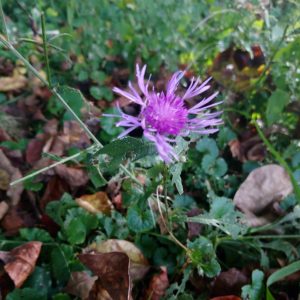
I chose to take a trip to the other side of the tree and focus on a purple flower. It had multiple stems, a few buds, and one fully bloomed flower. The leaves were grey and holey, as though something had eaten through them. I’ve seen these flowers around campus frequently, and I identified it as a knapweed (genus Centaurea). It was interesting to observe something stationary and seemingly unchanging for so long; I started to consider a lot of details I wouldn’t have otherwise, like the scaled pattern of the receptacle or what pest might be harming the plant. After some research I discovered these plants can grow up to twenty stems and three feet tall – I’ve never seen any that big on campus, so I was surprised to discover this. I also learned that many flowers of this genus, especially the spotted knapweed, are listed as invasive. They are believed to have been accidently introduced in the late 20th century from ships coming from Europe and spread through the northeast and Midwest of North America. With our recent discussions about populations and invasive species, I think it would be interesting to research the population growth of this flower.
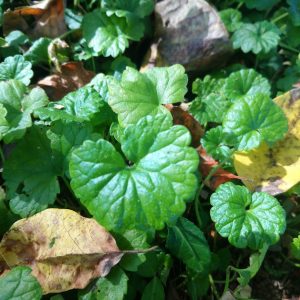
Some other plants in the area weren’t as easy to identify. As I noticed in my last trip, many of the saplings and smaller plants have lost their leaves, which makes identification nearly impossible (for me at least). Of the remaining plants, I chose to investigate the ones making up the ground cover. With the help of the iNaturalist app, I decided the ground plants are most likely ground ivy (genus Glechoma). It was difficult to be sure as the plants aren’t flowering right now, but that seems the closest match. One of the most interesting things I learned is that this species can suppress the growth of other plants by producing chemicals, a process called allelopathy, which probably explains why all of the other plants are gathered away from the ivy close to the bottom of tree (Mills). This process, in addition to its broad light-blocking leaves and ability to survive after being cut to short lengths, make it very tough competition. Its presence may also indicate something about the soil quality, as it seems it does very well in damp, shaded areas with rich soil.
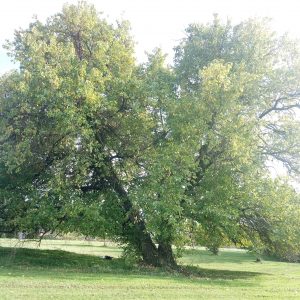
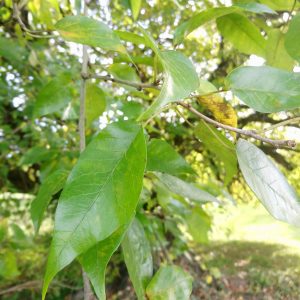
As a sidenote: I did attempt to identify this tree again, but I’m admitting defeat, does anyone have any ideas?
For the most part, I enjoyed trying to identify plants in my area and researching them afterward. It’s interesting to know more about the species and what to look for in the future. I think knowing what aspects of a plant are most commonly used to identify them, such as leaf arrangement and fruit, will be useful in the future, and will help me pay closer attention in nature in general. I’m curious about why so many invasive species seem to favor this area, so that may be something I can now look out for. On a final note, I really like observing the change of the season up close; I didn’t expect the leaves of this tree to turn red, so it was a pleasant and beautiful surprise.
Sources
“Ground Ivy”. Purdue University. https://turf.purdue.edu/ground-ivy/
Mills, Elaine. “Invasive Plants in Northern Virginia: Ground Ivy”. Master Gardeners of Northern Virginia. https://mgnv.org/2020/01/27/invasive-plants-in-northern-virginia-ground-ivy/
“Spotted knapweed (Centaurea maculosa Lam.)”. Invasive Alien Plant Species of Virginia. Department of Conservation and Recreation. https://www.dcr.virginia.gov/natural-heritage/document/fscema.pdf

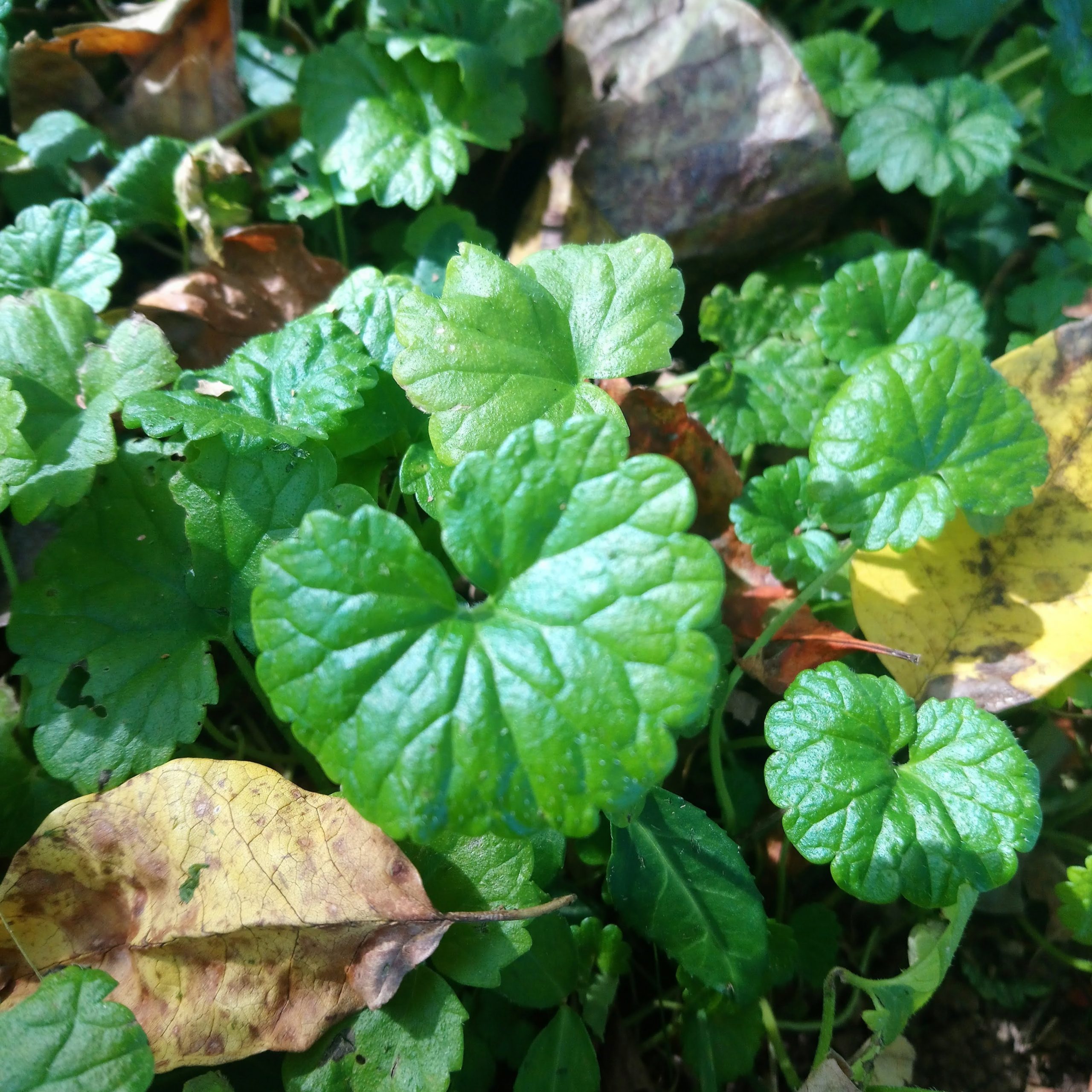
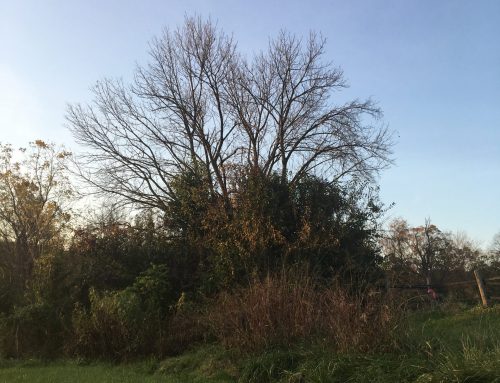
I love all of the detail in that enlarged photo at the beginning of your blog – so much life and detail in a thimble of photo.
Kady did you try iNaturalist for your tree? Looks like simple and alternate – want to borrow a tree guide and try?